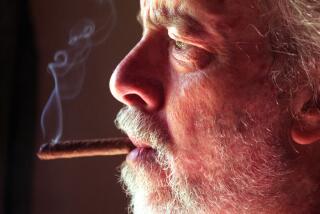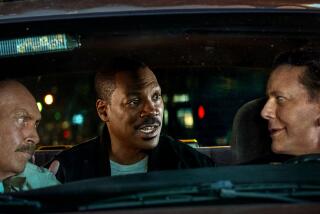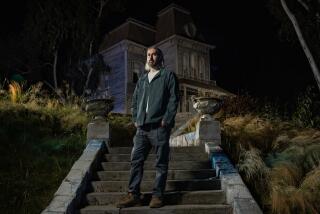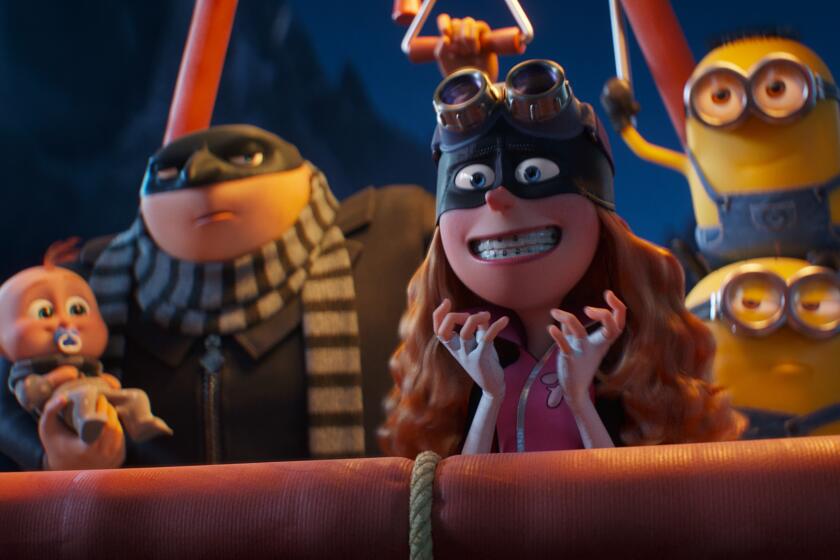Pas de deux is at heart of Cuban dance film
Carlos Acosta, the son of an Afro-Cuban truck driver, rose from one of Havana’s poorest neighborhoods to become an international ballet star who combines a seemingly effortless grace with an earthy strength that propels him far beyond the usual boundaries of physical eloquence.
Septime Webre, the Cuban American son of a sugar plantation director whose family fled after industry was nationalized by the Cuban Revolution, grew up in privilege to become the artistic director of the Washington Ballet.
Their very different journeys form the pas de deux at the heart of “Dance Cuba: Dreams of Flight,” a visually lush documentary that follows them as they create separate dance pieces to be performed in Havana. The film provides an intimate glimpse of Cuba’s highly accomplished classical dance world and a rare look into the communist island’s contemporary society.
“Dance Cuba,” which is accompanied by a languidly elegant soundtrack by Cuban jazz great Chucho Valdez, will screen Jan. 12 and Jan. 14 at the Palm Springs International Film Festival.
“Focusing on dance was a way to get a lens in Cuba over a sweeping period of time,” said Cynthia Newport, the film’s New York-based producer and director. “I knew the emotional heart of the story I wanted to tell: of exile and return, identity, of ‘who I am’ and ‘where do I belong,’ of loss and redemption. I wanted to capture the combination of great beauty and great poignancy.
“Dance ballet in Cuba is such a phenomenon,” she said. “It was apparent to me that everything was at stake every day, particularly in the lives of the dancers.”
Few dancers began with more at stake than Acosta, who earned a reputation as a neighborhood scamp who preferred break dancing and playing soccer with his friends to attending school. When he was 10, his father was sent to jail for two years after being involved in a fatal truck accident.
Acosta was thrown out of school for bad behavior, and his father insisted that he matriculate at the national ballet academy, which had so many difficulties attracting Cuban boys in the 1960s that children were drafted from orphanages and charity programs.
There Acosta bloomed, and soon he emerged as a star of Cuba’s National Ballet. For the last seven years, he has danced with the Royal Ballet in London, where critics have compared him to Mikhail Baryshnikov and Rudolf Nureyev.
“No one could have foreseen that I would get to where I am today. I had a terrible reputation as a boy,” Acosta, 31, said. “Now they invite me all over the world. It’s incredible. It shows the transforming power of a cultural education.” But if Acosta has gone far, he’s not eager to shed his roots.
“Dance Cuba” shows him creating his acclaimed “Tocororo,” an epic ballet about a Cuban country boy, or guajiro, whose father sends him to ballet school in Havana. As a live band pounds the rhythms of a song honoring Afro-Cuban gods, Acosta plays the role of a wooden country boy being taught to dance by a sultry, swaying city girl and earning his place among the hip urban sophisticates. It mixes classical ballet with sensual Afro-Cuban dancing and even break dancing.
“ ‘Tocororo’ is influenced by the Cuban culture and African culture that was always in my home,” Acosta said. “That piece was the story of my life, so that had to be part of it. ‘Tocororo’ is not a classical piece. It is more of a hybrid, more populist and more contemporary.”
When Acosta unveils his dance in Havana in the film, Cuban leader Fidel Castro comes to watch, commenting that he doesn’t know much about dance, “but I know what I like.” Also in the audience is the grande dame of Cuban dance, Alicia Alonso, who was one of the 20th century’s most distinguished ballerinas before she was tapped by Castro to lead the modern Ballet Nacional de Cuba. It was Alonso who first invited Webre to Cuba in 1999 and later asked him if he would like to bring his own dance piece to Havana.
He too drew on his own life. Webre, the seventh of nine children, was born in New Orleans in 1961 to a Cuban mother and American father whose work in the sugar industry took the family to the Bahamas, Ivory Coast and Sudan.
“I grew up hearing stories of Cuba, hearing that we were really Cubans and we were going to return,” he recalled. Webre’s piece, “Mercedes y Betty,” is a ballet named for two maverick unmarried aunts whose exploits were often recounted in family tales of Cuba.
“The nostalgia you see in the ballet is the kind of nostalgia I felt when I arrived in Havana for the first time,” he said. “I knew it was home, but I didn’t know it. I was overcome by this sense of nostalgia and homecoming and discovery, and that’s all part of the piece I made.”
One of the strongest characters in the documentary is the majestic city of Havana, a Caribbean crossroads whose complex hybrid culture manages to evoke Madrid, Manhattan and some far-off African port. The camera lingers over Havana’s sun-faded seaside mansions and the winged angels who herald the red sunset on the parapets of the Teatro Garcia Lorca.
Though Havana is just 90 miles from Florida, traveling there to produce the documentary presented formidable obstacles because of the U.S. trade embargo and tensions on both sides of the Florida Straits.
Once, Newport and a crew were scheduled to arrive in Cuba on a Saturday and still didn’t have U.S. consent by Thursday (it came through). Another time she arrived in Cuba with a crew and equipment but couldn’t get Cuban credentials to film.
Like many things Cuban, the stories told in “Dance Cuba” are bittersweet. Cuban ballerina Lorna Feijoo soars in “Swan Lake” only to abandon Cuba for a dance career in Boston. A Cuban defector in the Washington Ballet is not allowed to return to Cuba to perform with her company.
Acosta obtained permission from Cuban authorities to dance abroad. But he is left feeling stranded, far from the Havana neighborhood where he whiled away hours outside, talking and laughing with his family and neighbors. In London he doesn’t even know his neighbors.
“Sometimes I don’t even know who I am anymore,” he muses in the documentary, as his imagination carries him back to Havana’s Malecon seawall, where the waves splash over the street and his friends jump off the wall into the shimmering sea.
The glimpse Newport provided into Cuba may be a fleeting one. Today she doubts the film could be made under the tightened Bush administration regulations governing exchange with Cuba. “Perhaps the saddest thing,” she said, “is that the film has yet to play in Havana.” The application for a U.S. Treasury Department license to screen it there is pending.
More to Read
Only good movies
Get the Indie Focus newsletter, Mark Olsen's weekly guide to the world of cinema.
You may occasionally receive promotional content from the Los Angeles Times.






